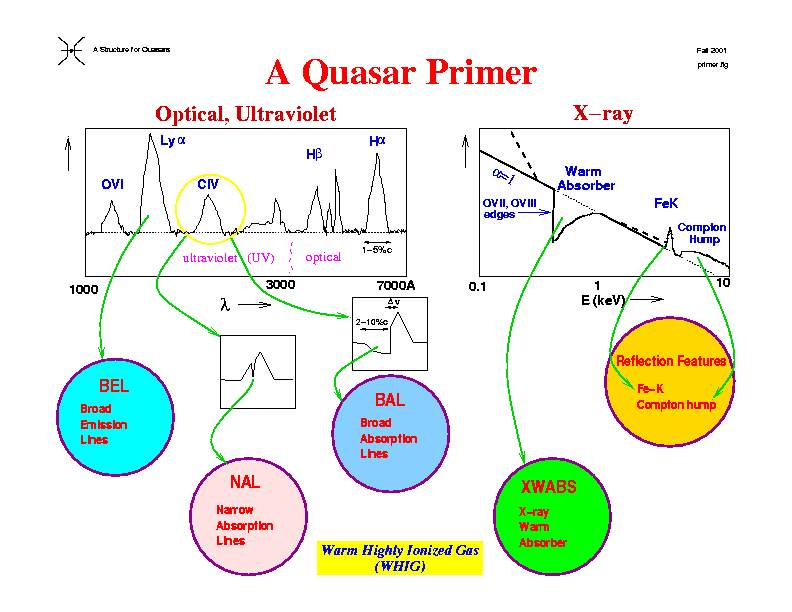

The picture shows sketches of the optical and ultraviolet (top, left) and X-ray (top, right) spectra of a typical quasar or AGN (Active Galactic Nucleus). These spectra are full of sharp features due to the interaction of atoms with light ('atomic features'). They can be high (= bright) points, called 'emission lines' or low (= dark) points, called 'absorption lines'
The five colored bubbles point to five common features in normal (`type 1') quasar spectra:
* Broad Emission Lines ("BELs") [seen in 100% of AGN],
* Narrow Absorption Lines ("NALs") [seen in 50% of AGN],
* Broad Absorption Lines ("BALs") [see in only 10% of AGN],
* X-ray Warm Absorbers ("XWABS"), [seen in the same 50% of AGN as NALs],
* Reflection Features ("Fe-K" and "Compton Humps") [seen in many AGN, fraction uncertain].
I claim that these features are all produced by the same outflowing wind (Elvis 2000, Astrophysical Journal, vol.545, p.63-76, see also astro-ph/000806). This wind is mostly made up of a warm highly ionized gas. See Quasar Wind Structure for more details.